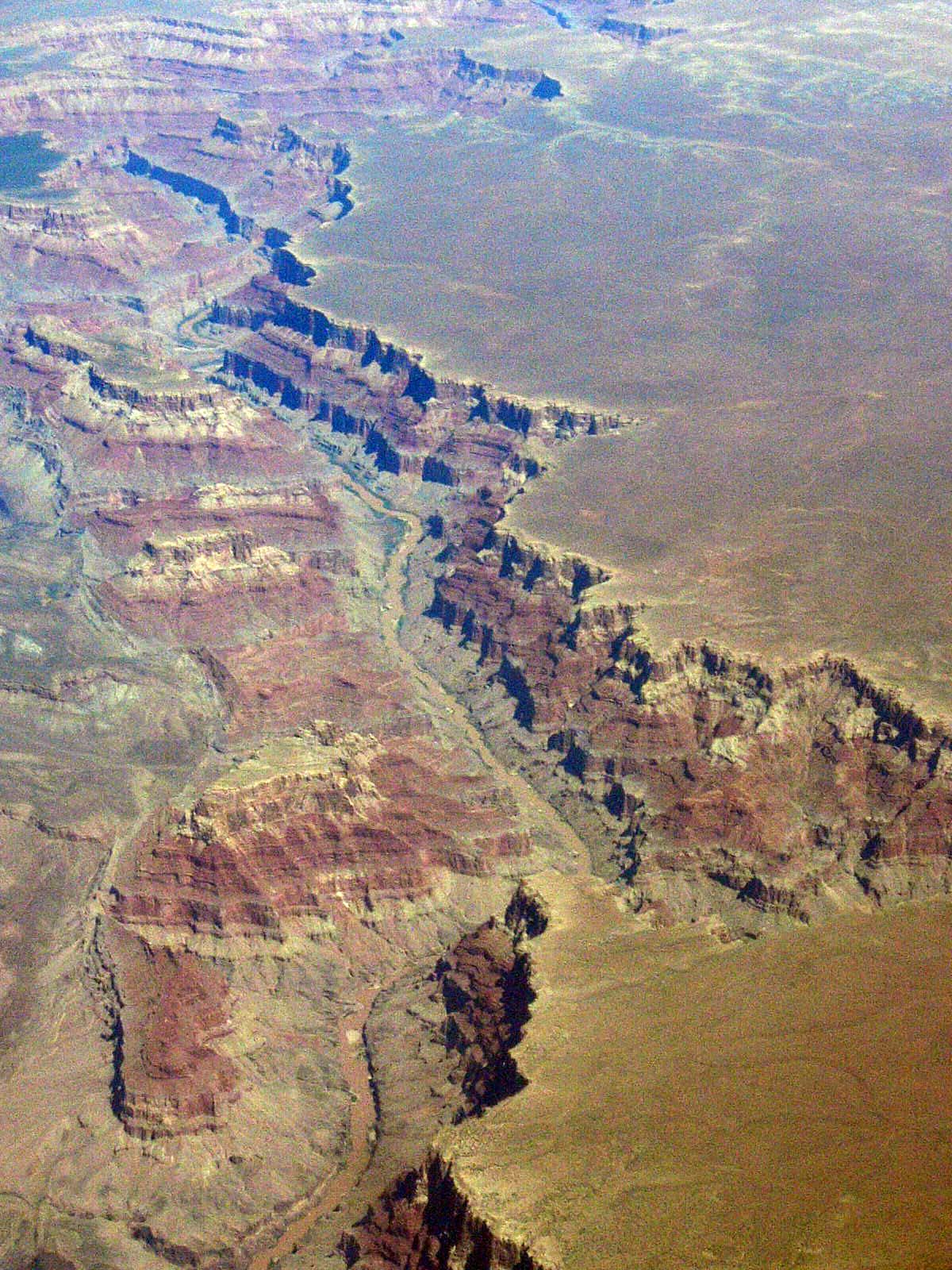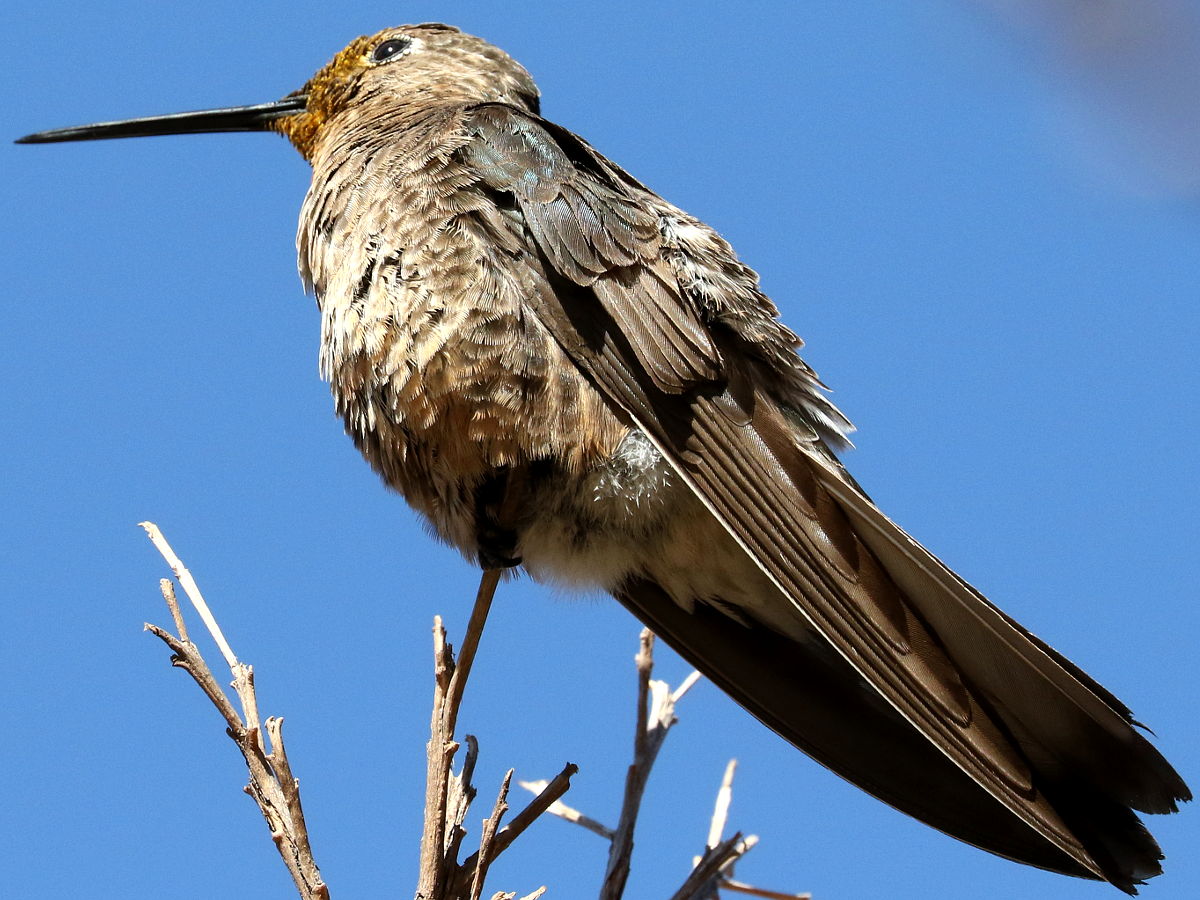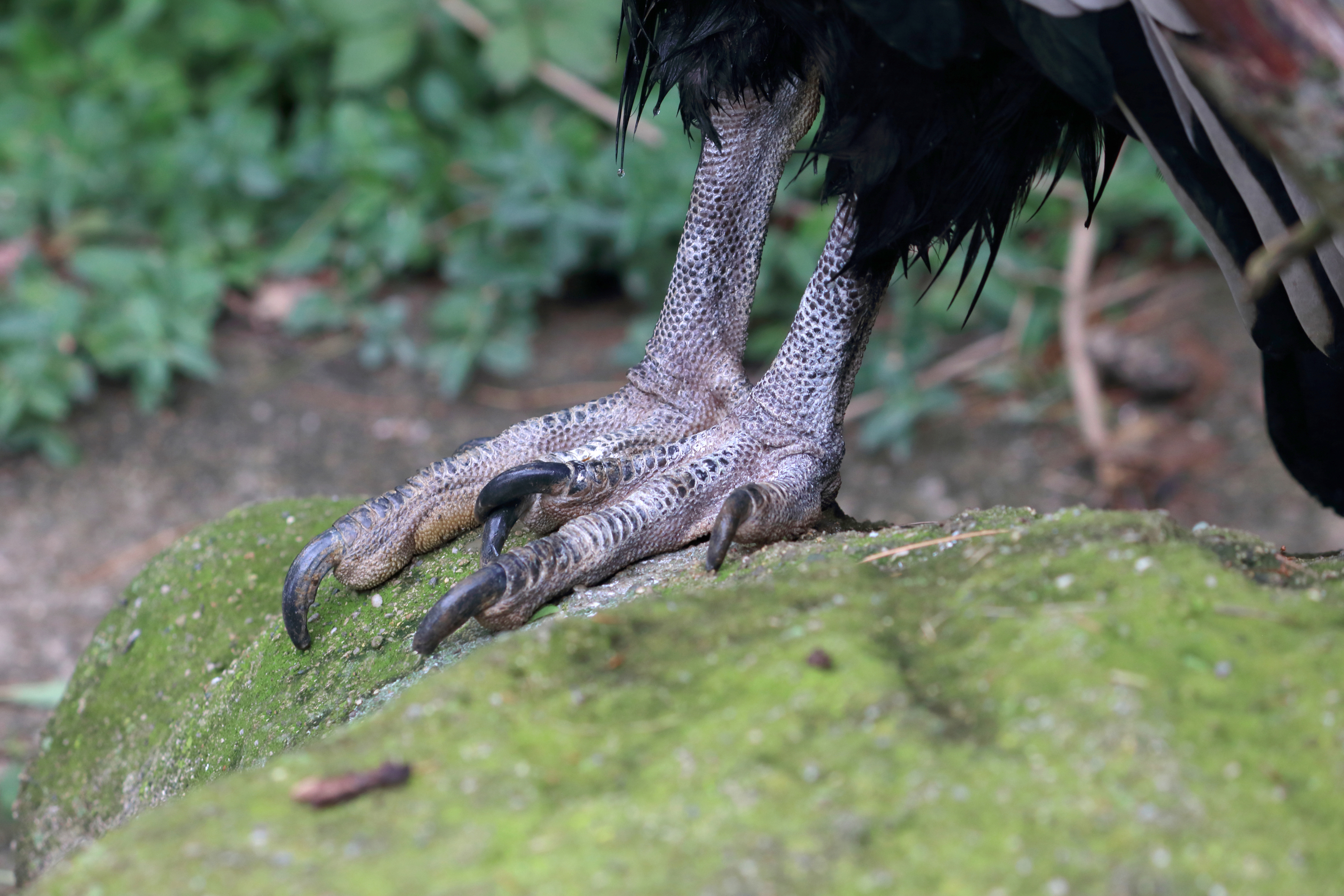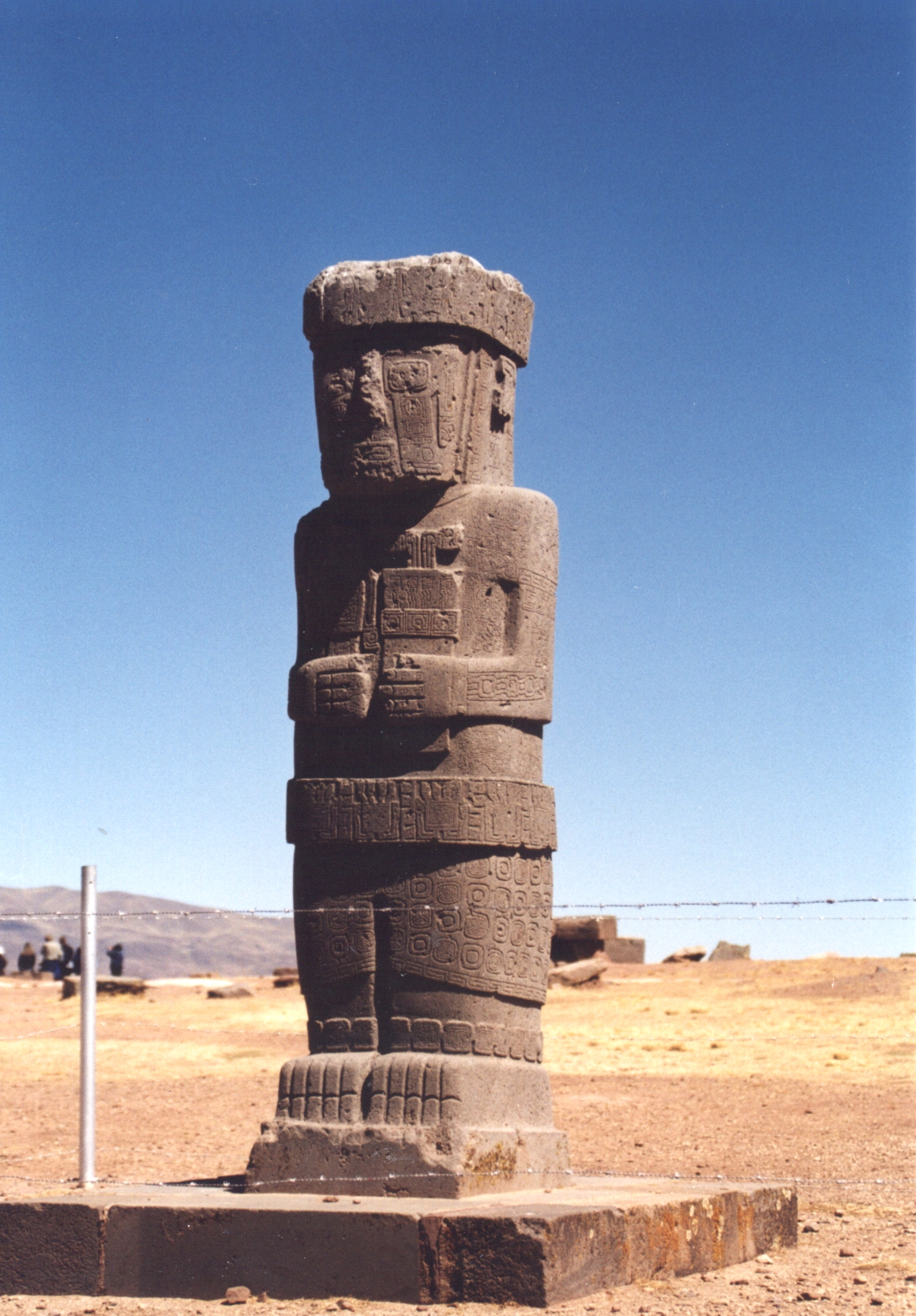|
Colca Canyon
The Colca Canyon is a canyon of the Colca River in southern Peru, located about northwest of Arequipa. With a depth of about 1000 – 2000 m (3300 – 6600 ft) (whereas bottom is at cca 2000 m and edges are at 3000 – 4000 metres above the sea level), it is one of the deepest canyons in the world. Its length is about . The Colca Valley is a colorful Andean valley with pre-Inca rooted inhabitants, and towns founded in Spanish colonial times, still inhabited by people of the Collagua and the Cabana cultures. The local people maintain their ancestral traditions and continue to cultivate the pre-Inca stepped terraces, called andenes. It is Peru's third most-visited tourist destination with about 120,000 visitors annually. History The Quechua-speaking Cabanas, probably descended from the Wari culture, and the Aymara-speaking Collaguas, who moved to the area from the Lake Titicaca region, inhabited the valley in the pre-Inca era. The Inca probably arrived in the Colca ... [...More Info...] [...Related Items...] OR: [Wikipedia] [Google] [Baidu] |
Canyon
A canyon (; archaic British English spelling: ''cañon''), gorge or chasm, is a deep cleft between escarpments or cliffs resulting from weathering and the erosive activity of a river over geologic time scales. Rivers have a natural tendency to cut through underlying surfaces, eventually wearing away rock layers as sediments are removed downstream. A river bed will gradually reach a baseline elevation, which is the same elevation as the body of water into which the river drains. The processes of weathering and erosion will form canyons when the river's headwaters and estuary are at significantly different elevations, particularly through regions where softer rock layers are intermingled with harder layers more resistant to weathering. A canyon may also refer to a rift between two mountain peaks, such as those in ranges including the Rocky Mountains, the Alps, the Himalayas or the Andes. Usually, a river or stream carves out such splits between mountains. Examples of mountain- ... [...More Info...] [...Related Items...] OR: [Wikipedia] [Google] [Baidu] |
Chivay
Chivay is a town in the Colca valley, capital of the Caylloma province in the Arequipa region, Peru. Located at about 3,600 m above sea level (12,000 ft), it lies upstream of the renowned Colca Canyon. It has a central town square and an active market. Ten km to the east, and 1,500 metres above the town of Chivay lies the Chivay obsidian source. Thermal springs are located 3 km from town; a number of heated pools have been constructed. A stone "Inca" bridge crosses the Colca River ravine, just to the north of the town. The town is a popular staging point for tourists visiting Condor Cross or Cruz Del Condor, where condors can be seen catching thermal uplifts a few kilometres downstream. Climate Chivay has a subtropical highland climate (Köppen: ''Cwb'') characterized by mild days, cold nights, and distinct wet and dry seasons. The total annual precipitation is around . Chivay receives the majority of its precipitation during the wet season, which spans from December ... [...More Info...] [...Related Items...] OR: [Wikipedia] [Google] [Baidu] |
Molina's Hog-nosed Skunk
Molina's hog-nosed skunk, also called the Andes skunk (''Conepatus chinga''), is a skunk species from South America. It is found in Argentina, Bolivia, Brazil, Chile, Peru, Paraguay, and Uruguay, at elevations up to 5000 m. Habitat The Molina's hog-nosed skunk's native range is throughout mid to southern South America, Chile, Peru, northern Argentina, Bolivia, Paraguay, Uruguay, and southern Brazil. The mammal is therefore associated with temperate regions and open areas, mainly described as the Pampas biome and preferring to live in open vegetation, shrub forest and rocky sloped areas. Population and distribution Typically they will live alone in an average home range size of about 1.66 individuals/km2 with some overlapping and about six skunks per 3.5 km2. Although living in mostly solitary areas, the skunks will come together temporarily for mating purposes. Diet Foraging mainly at night, the skunk is omnivorous, eating birds, small mammals, eggs, insects, leaves, and fr ... [...More Info...] [...Related Items...] OR: [Wikipedia] [Google] [Baidu] |
Vizcacha
Viscacha or vizcacha (, ) are rodents of two genera (''Lagidium'' and ''Lagostomus'') in the family Chinchillidae. They are native to South America and convergently resemble rabbits. The five extant species of viscacha are: *The Plains viscacha (''Lagostomus maximus''), a resident of the Pampas of Argentina, is easily differentiated from other viscachas by black and gray mustache-like facial markings. This species lives colonially in warrens of 10 to over 100. It is very vocal and emits alarm calls. The plains viscacha can strip grassland used to graze livestock; this has caused ranchers to consider the rodent a pest species. *''Lagidium ahuacaense'' is a newly described species of mountain viscacha from the Ecuadorian Andes. *The northern viscacha (''Lagidium peruanum'') is native to the Peruvian Andes at elevations between the tree line and the snow line. It is dorsally gray or brown in color, with a bushy tail and long, furry ears. This species lives in large colonies separat ... [...More Info...] [...Related Items...] OR: [Wikipedia] [Google] [Baidu] |
Mountain Caracara
The mountain caracara (''Phalcoboenus megalopterus''), (Spanish: corequenque) is a species of bird of prey in the family Falconidae. It is found in Puna grassland, puna and páramo in the Andes, ranging from northern Ecuador, through Peru and Bolivia, to northern Argentina and Chile. It is generally uncommon to fairly common. It resembles the closely related Carunculated Caracara and White-throated Caracara, but unlike those species, its chest is uniform black. Juvenile (organism), Juveniles are far less distinctive than the red-faced piebald, pied adults, being overall brown with dull pinkish-grey facial skin. Description A medium-sized caracara with a faintly blue beak tip turning to bright orange, strongly contrasted by the jet-black feathers of its head, back and chest. Its rump, belly and upper tail and undertail coverts are pure white, changing sharply from black to white between the belly and chest. Its black wings have small white shoulder patches and it has white spots on ... [...More Info...] [...Related Items...] OR: [Wikipedia] [Google] [Baidu] |
Chilean Flamingo
The Chilean flamingo (''Phoenicopterus chilensis'') is a species of large flamingo at a height of closely related to the American flamingo and the greater flamingo, with which it was previously considered a subspecies before being classified as its own species as a result of their lighter color, smaller size and behavioral differences. The species is listed as Near Threatened on the IUCN Red List. The species breeds in South America from Ecuador and Peru to Chile and Argentina and east to Brazil; it has been introduced into Germany. Like all flamingos, it lays a single chalky-white egg on a mud mound. These flamingos are mainly restricted to salt lagoons and soda lakes but these areas are vulnerable to habitat loss and water pollution, especially from mining and irrigation which can cause rapid habitat degradation. Description The Chilean flamingo's plumage is pinker than the slightly larger greater flamingo, but less so than the American flamingo. It can be differen ... [...More Info...] [...Related Items...] OR: [Wikipedia] [Google] [Baidu] |
Andean Goose
The Andean goose (''Chloephaga melanoptera'') is a species of waterfowl in tribe Tadornini of subfamily Anserinae.HBW and BirdLife International (2021) Handbook of the Birds of the World and BirdLife International digital checklist of the birds of the world. Version 6. Available at: http://datazone.birdlife.org/userfiles/file/Species/Taxonomy/HBW-BirdLife_Checklist_v6_Dec21.zip retrieved August 7, 2022 It is found in Argentina, Bolivia, Chile, and Peru.Remsen, J. V., Jr., J. I. Areta, E. Bonaccorso, S. Claramunt, A. Jaramillo, D. F. Lane, J. F. Pacheco, M. B. Robbins, F. G. Stiles, and K. J. Zimmer. Version 24 July 2022. Species Lists of Birds for South American Countries and Territories. https://www.museum.lsu.edu/~Remsen/SACCCountryLists.htm retrieved July 24, 2022 Taxonomy and systematics The Andean goose's taxonomy is unsettled. The International Ornithological Committee (IOC) and BirdLife International's ''Handbook of the Birds of the World'' (HBW) place it in genus ''Chl ... [...More Info...] [...Related Items...] OR: [Wikipedia] [Google] [Baidu] |
Giant Hummingbird
The giant hummingbirds are Hummingbird, hummingbirds of the genus ''Patagona''. The genus includes two species, the northern giant hummingbird, sedentary giant hummingbird and the southern giant hummingbird, migratory giant hummingbird, which are the largest and second largest species of hummingbird respectively. Taxonomy The giant hummingbird was species description, described and illustrated in 1824 by the French ornithologist Louis Pierre Vieillot based on a specimen that Vieillot mistakenly believed had been collected in Brazil. The type locality (biology), type locality was designated as Valparaíso in Chile by Carl Eduard Hellmayr in 1945. The giant hummingbird was the only species placed in the genus ''Patagona'' when introduced by George Robert Gray in 1840. Molecular phylogenetic studies have shown that the giant hummingbird has no close relatives and is sister taxon, sister to the hummingbird subfamily Trochilinae, a large clade containing the Tribe (biology), tribes ... [...More Info...] [...Related Items...] OR: [Wikipedia] [Google] [Baidu] |
Andean Condor
The Andean condor (''Vultur gryphus'') is a South American New World vulture and is the only member of the genus ''Vultur''. It is found in the Andes mountains and adjacent Pacific coasts of western South America. With a maximum wingspan of and weight of , the Andean condor is one of the largest flying birds in the world, and is generally considered to be the largest bird of prey in the world. It is a large black vulture with a ruff of white feathers surrounding the base of the neck and, especially in the male, large white patches on the wings. The head and neck are nearly featherless, and are a dull red color, which may flush and therefore change color in response to the bird's emotional state. In the male, there is a wattle on the neck and a large, dark red Comb (anatomy), comb or caruncle on the crown of the head. The female condor is smaller than the male, an exception to the usual sexual dimorphism seen in bird of prey, birds of prey. The condor is primarily a scavenger, ... [...More Info...] [...Related Items...] OR: [Wikipedia] [Google] [Baidu] |
Inca Empire
The Inca Empire, officially known as the Realm of the Four Parts (, ), was the largest empire in pre-Columbian America. The administrative, political, and military center of the empire was in the city of Cusco. The History of the Incas, Inca civilisation rose from the Peruvian highlands sometime in the early 13th century. The Portuguese explorer Aleixo Garcia was the first European to reach the Inca Empire in 1524. Later, in 1532, the Spanish Empire, Spanish began the conquest of the Inca Empire, and by 1572 Neo-Inca State, the last Inca state was fully conquered. From 1438 to 1533, the Incas incorporated a large portion of western South America, centered on the Andes, Andean Mountains, using conquest and peaceful assimilation, among other methods. At its largest, the empire joined modern-day Peru with what are now western Ecuador, western and south-central Bolivia, northwest Argentina, the southwesternmost tip of Colombia and Incas in Central Chile, a large portion of modern- ... [...More Info...] [...Related Items...] OR: [Wikipedia] [Google] [Baidu] |
Tapay District
Tapay District is one of twenty Districts of Peru, districts of Caylloma Province in Peru. Geography The Chila mountain range, Chila mountain range traverses the district. One of the highest mountains of the district is Suriwiri. Other mountains are listed below:escale.minedu.gob.pe - UGEL maps of the Caylloma Province 1 (Arequipa Region) Tapay lies north of the Colca River, Colca valley. Ethnic groups The people in the district are mainly Indigenous peoples of the Americas, indigenous citizens of Quechua people, Quechua descent. Quechua language, Quechua is the language which the majority of the population (72.10%) learnt to speak in childhood, 27.10% of the residents started speaking using the Spanish language, Spanish language (2007 Peru Census). INEI, Peru, Censos Nacionales 2007, Frequencias: Preguntas de ... [...More Info...] [...Related Items...] OR: [Wikipedia] [Google] [Baidu] |
Ampato
Ampato (possibly from Quechua ''hamp'atu'' or from Aymara ''jamp'atu'', both meaning "frog") is a dormant stratovolcano in the Andes of southern Peru. It lies about northwest of Arequipa and is part of a north-south chain that includes the volcanoes Hualca Hualca and Sabancaya, the last of which has been historically active. Ampato consists of three volcanic cones, which lie on top of an older eroded volcanic edifice. They were formed sequentially by extrusion of lava flows, but Ampato has also had explosive eruptions which have deposited ash, lapilli and pumice in the surrounding landscape. One young lava flow has been dated to 17,000 ± 6,000 years before present, but a summit lava dome is even younger, and Holocene ash layers in surrounding peat bogs may testify to the occurrence of recent eruptions. The present-day volcano is covered by an ice cap, and during the last glacial maximum glaciers advanced to low altitudes. In 1995, an Inca mummy known as Mummy Juanita was ... [...More Info...] [...Related Items...] OR: [Wikipedia] [Google] [Baidu] |






